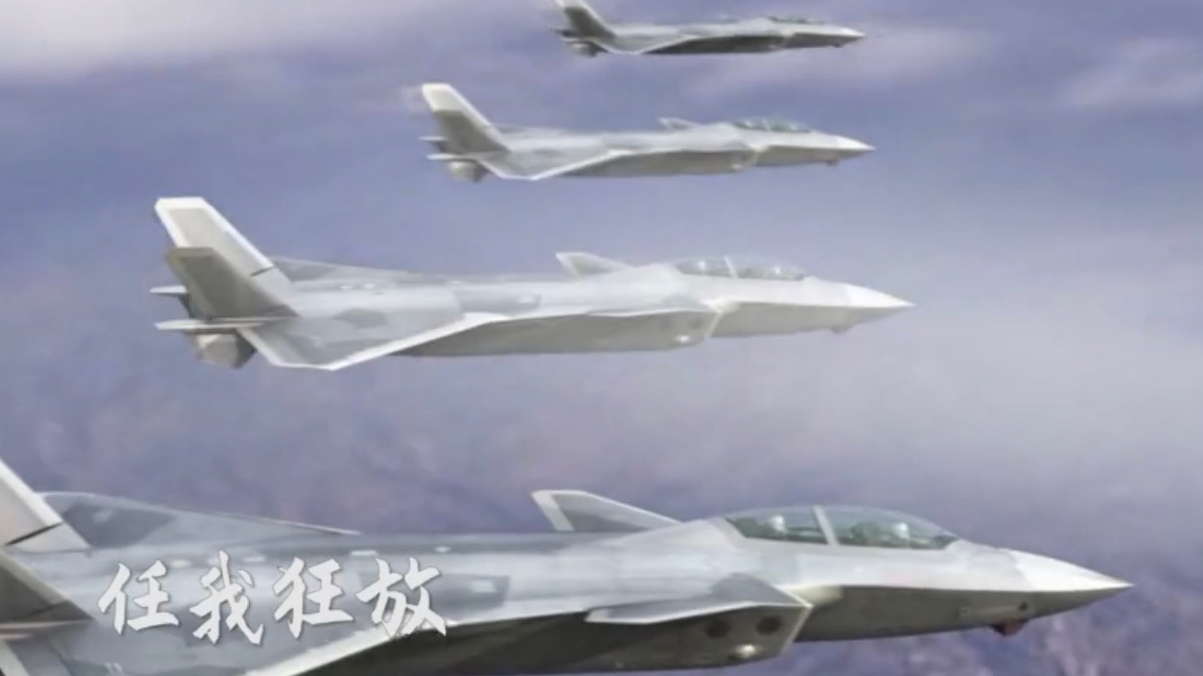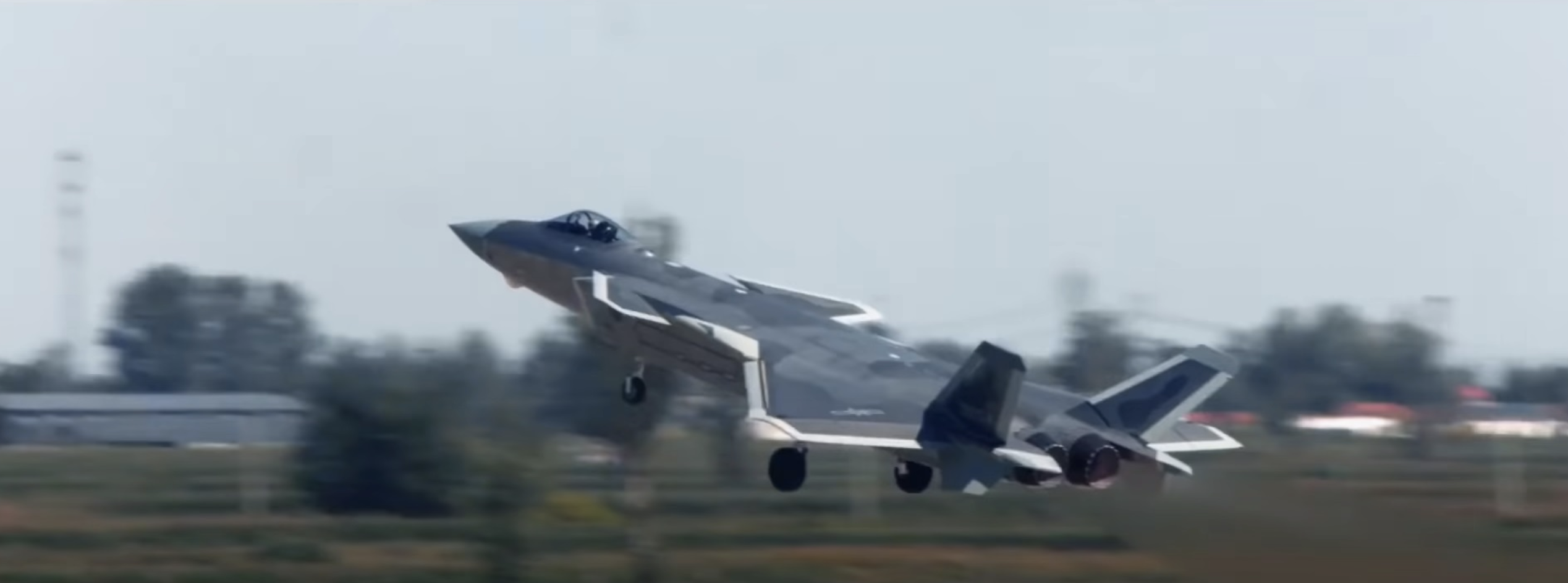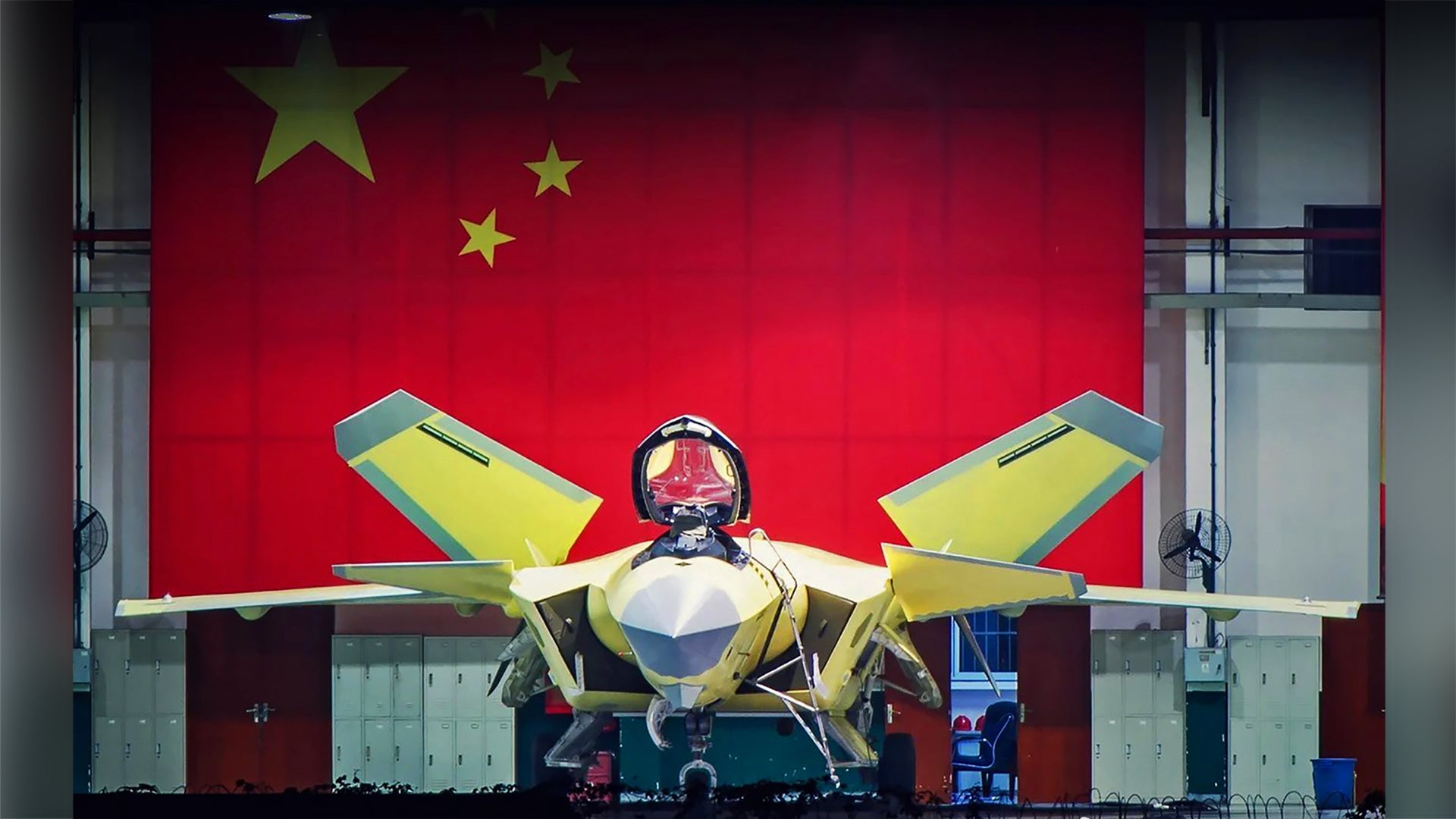Exactly 10 years from its first flight, the Chengdu J-20 remains, without doubt, the main focus of global attention when it comes to China’s military aircraft developments. Within the People’s Republic of China, too, the jet known as the Mighty Dragon has become a totem for the country’s fast-emerging high-technology defense sector and its associated aviation industries. Plenty has happened since the J-20’s first sensational appearance in late 2010, including the appearance of a second stealth fighter, which is yet to enter service. Meanwhile, many column inches have been spent attempting to assess the J-20’s weapons and capabilities, its likely future development path, and even its basic mission. Now, it seems, the next development in the program could be a two-seat version for training as well as combat missions.
An official video released recently by the Aviation Industry Corporation of China, or AVIC, the parent conglomerate responsible for the Chengdu Aircraft Industrial Group that builds the J-20, features a computer-generated sequence showing a formation of two-seat versions of the fighter. While there has been some previous speculation that such a variant might be developed, this is apparently the first time a concept of it has been seen in any kind of official imagery.

Of course, the release of the video is no guarantee that a two-seat J-20 is in development, or, if it is, that it will emerge looking as it does in this computer-generated form. Over the years, however, the J-20 program has provided a few surprises.
It is worth remembering that when it first appeared on the runway at Chengdu, the black-painted J-20 was deemed by some Western observers to be a technology demonstrator at best, not the country’s first stealth fighter. However, after some minor tweaks, service entry followed in late 2016 and the jet is now in quantity production as only the third such stealthy fighter to become operational anywhere in the world.

The most recent major development concerning the J-20 has been the steady introduction of an indigenous powerplant to the series-built aircraft. While the prototypes and early production batches were powered by Russian-supplied AL-31 turbofans, more recent J-20A aircraft use the indigenous WS-10. The engine in question is the WS-10C, a different version to that used in the single-engine Chengdu J-10C multirole fighter, and which features distinctive ‘serrated’ exhaust petals, designed to reduce aircraft’s rear hemisphere radar cross-section (RCS).
Today, Western sources estimate the number of J-20s built by the end of 2019 as around 50, a figure that likely also includes pre-production machines. Unconfirmed Chinese reports suggest that a production capacity of 48 aircraft annually, but there is no evidence that that figure has been attained. China has shown, however, that it is able to rapidly produce large numbers of military aircraft and this goal could well be met longer-term. Equally importantly, the J-20 has been incrementally improved while production continued. In a paper released last October, the Royal United Services Institute, or RUSI, think tank claimed that “subsequent developments are likely to increase its LO [low-observable] characteristics and sensor capabilities.”

As for a two-seat version of the J-20, this would further set the aircraft apart from its closest counterparts, the American F-22 and F-35, and from the Russian Su-57 Felon, the latter of which is not yet in frontline service. None of these have been built in two-seat form, although India did seek a two-seat version of the Su-57 before it abandoned plans to co-produce it with Russia.
Provided its equipped with dual controls, a two-seat J-20 would clearly provide a useful training platform for pilots converting to the type with either an operational regiment or perhaps even a tactical training unit. It would also make sense from a doctrinal point of view since most of China’s modern fighters are also available as combat-capable two-seaters, while others have been specifically developed as two-seat strike fighters.
Moreover, for the types of combat missions that the J-20 is likely to undertake, a second crew member might be especially valuable. Western analysts have long expected the J-20 to offer considerable range, allowing it to perform penetrating counter-air missions far out into contested airspace, including over the South China Sea. Two pilots would help reduce crew fatigue and better battle-manage during complex missions lasting for long periods. China’s ambition to further stretch the range of the J-20, even if just for ferry flights to far-flung locations, was apparent when an example was seen carrying four massive auxiliary fuel tanks in 2017.
When it first appeared, some attributed a likely offensive role to the J-20, perhaps including strike, and although there has been no evidence of this to date, a second crew member is also a useful attribute for purely air defense missions, especially those of long duration. Long-range combat air patrols and hunting down enemy force-multiplier assets, for example, would fit well into China’s established anti-access/area denial strategy and would benefit from two crew members.
While a traditional weapons systems officer in the back seat might be in charge of all the aircraft’s weapons, and how they are employed, as well as navigation and attack avionics, China’s increasing interest in unmanned combat aerial vehicles, or UCAVs, suggests that a notional J-20 back-seater could also serve as a drone controller, managing loyal wingman-type unmanned aircraft or swarming UCAVs.
A two-seat J-20 is not the only potential new development of the stealth fighter, however. The War Zone has already looked at the prospects for a mooted J-20B version, likely to feature upgraded indigenous powerplants, perhaps with thrust-vectoring controls, as well as increased power. You can read more about the possibilities for that version here.
The achievements so far in China’s first stealth fighter program are impressive by any measure, but especially when one recalls that, when it first appeared, there was much Western skepticism that the J-20 was a credible design. The first flight of a J-20 prototype, on January 11, 2011, coincided with a visit to China by U.S. Secretary of Defense Robert Gates. Gates repeatedly downplayed China’s ability to field such a weapon and predicted that the fighter wouldn’t be ready for service until the 2020s, at the earliest.
For now, it remains to be seen just what changes the next iteration of the J-20 will bring, but, based on past experience, the ability of China’s military aerospace industry to spring a surprise shouldn’t be discounted.
Contact the author: thomas@thedrive.com
